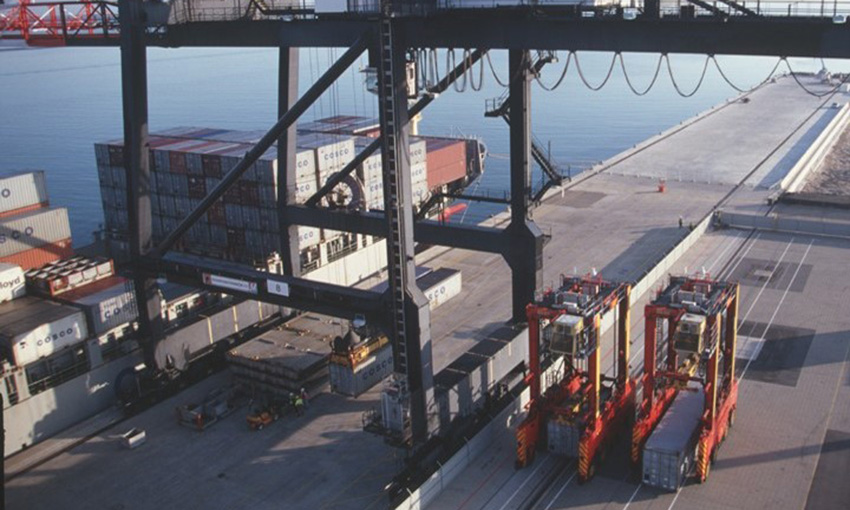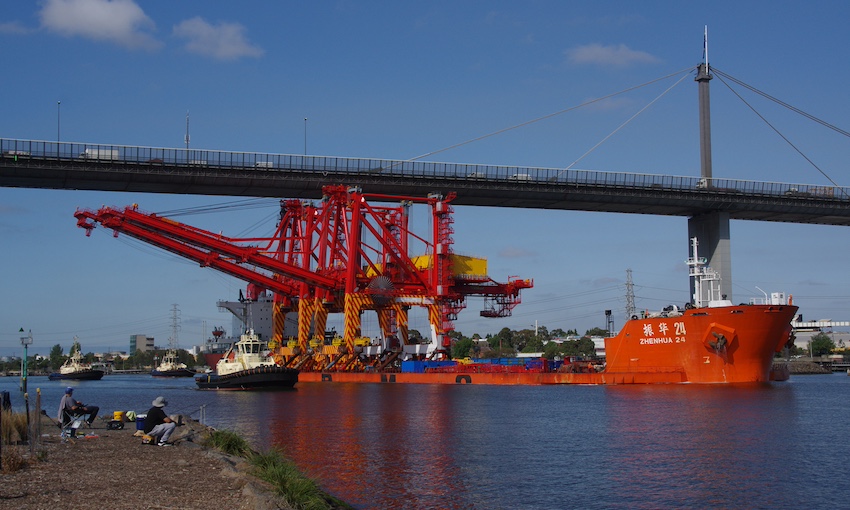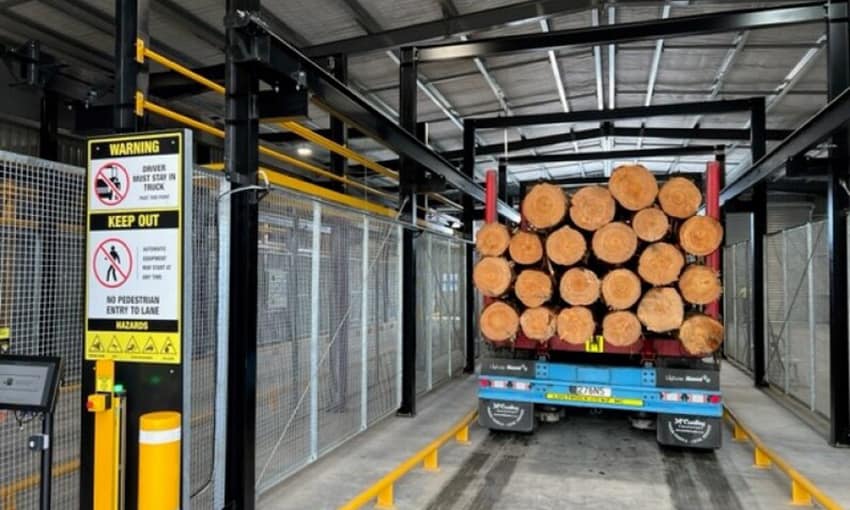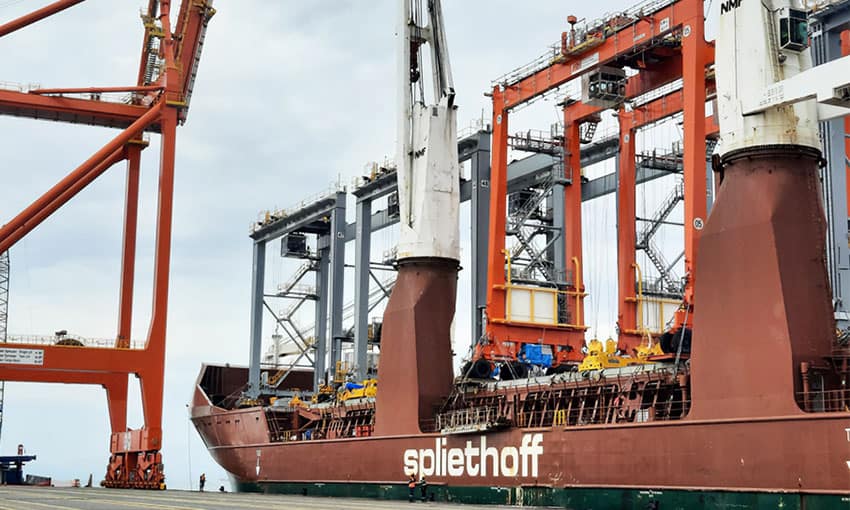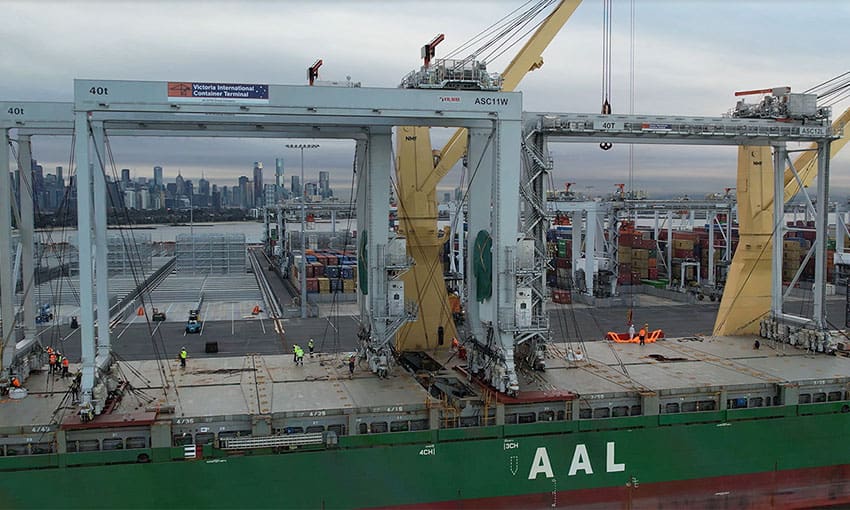SATURDAY 24 September was the 20th anniversary of the first ship ever worked with automated straddle carriers in Australia.
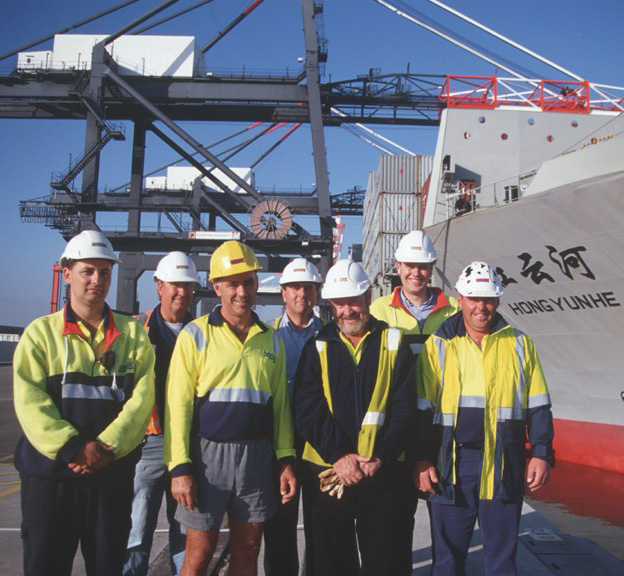
The COSCO ship Hong Yun He came alongside at Fisherman Islands Berth 7 and stevedores commenced on the midnight shift into 24 September 2002 – the first use of the automated straddle carrier technology in a live, commercial environment.
Patrick Brisbane Autostrad Terminal manager Matt Hollamby said the technology was developed by Patrick, under the leadership of Chris Corrigan, in partnership with the Australian Centre for Field Robotics at the University of Sydney.
He said Patrick had acquired the lease on Berth 7, the old Sealand terminal, at Port of Brisbane.
“Corrigan took the lease on that facility in 2000 and we spent two years trialling, developing – perfecting, if you like – the automated straddle carrier technology,” he said.
“As a consequence of that work, on the 24 September 2002, we gave it a run commercially. And, as a consequence of the success of those trials, we moved on to build the fully automated terminal that you can visit here today.”
Mr Hollamby has been the port manager for Patrick at the Port of Brisbane since 1997.
“It’s been the greatest experience of my life to be involved in building the new container terminal and automating Brisbane, taking the company to the point where it is now,” he said.
“My journey here has been from a manual operation at berths 1, 2 and 3, where we had driven straddle carriers, to looking out the window now, we have 35 automated straddle carriers, and we run a very efficient terminal.”
He said he gets a great deal of satisfaction from the fact that the Brisbane terminal is very safe.
“We used to have ergonomic injuries and what have you with people driving these machines, and this would now be one of the safest container terminals in Australia,” he said.
Mr Hollamby said the transition to autostrads was completed without any lost time.
“These changes are quite profound, and they set the business up for success ever since. I think it was an example of good forward planning in Australian stevedoring.”

